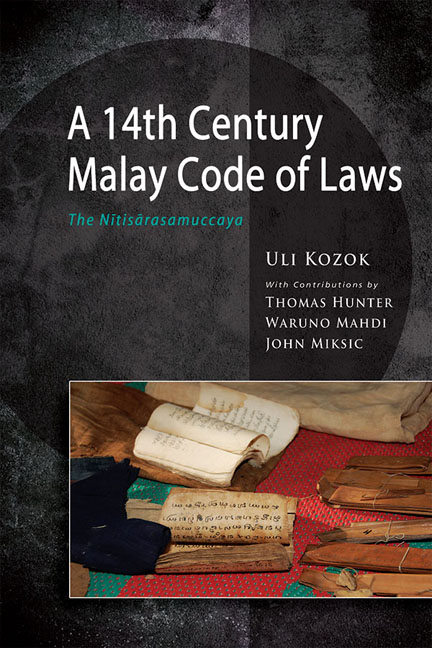Book contents
- Frontmatter
- Contents
- List of Tables
- List of Figures
- Abbreviations
- Preface
- About the Contributors
- 1 Pusaka: Kerinci Manuscripts
- 2 Kerinci and the Ancient History of Jambi
- 3 Tanjung Tanah Manuscript TK 214
- 4 Script and Language of the Tanjung Tanah Manuscript
- 5 Tanjung Tanah Manuscript TK 215
- 6 Sanskrit in a Distant Land: The Sanskritized Sections
- Bibliography
- Index
- Nalanda-Sriwijaya Series
- Images of TK 214
Preface
Published online by Cambridge University Press: 19 May 2017
- Frontmatter
- Contents
- List of Tables
- List of Figures
- Abbreviations
- Preface
- About the Contributors
- 1 Pusaka: Kerinci Manuscripts
- 2 Kerinci and the Ancient History of Jambi
- 3 Tanjung Tanah Manuscript TK 214
- 4 Script and Language of the Tanjung Tanah Manuscript
- 5 Tanjung Tanah Manuscript TK 215
- 6 Sanskrit in a Distant Land: The Sanskritized Sections
- Bibliography
- Index
- Nalanda-Sriwijaya Series
- Images of TK 214
Summary
This book is dedicated to a manuscript of a Malay legal code, the Nıtisārasamuccaya (Compendium of the Essence of Policy), that I saw for the first time in 2002 in a village on the shore of Lake Kerinci, and which later turned out to be the oldest extant Malay manuscript dating back to the fourteenth century.
I still fondly remember my first visit to Kerinci in 1999. My colleague from the University of Auckland, Drs Eric van Reijn, introduced me to Sutan Kari, a prominent figure and member of the local parliament of the regency of Kerinci. Upon my arrival at the bus station of Sungai Penuh, a small town, which is also the capital of the Kerinci regency, 260 kilometres south of Padang, I was picked up by the late Sutan Kari who, on the same morning, introduced me to Fauzi Siin, the bupati (regent) of Kerinci. When I explained to the bupati that I was planning to research the indigenous Kerinci script, he instantly offered me assistance by providing me with a car, and by taking care of my accommodation during my two-week stay in Kerinci.
Sutan Kari and his close friend Amir Gusti continued to assist me during my four subsequent visits to Kerinci between 2000 and 2004. As respected community leaders they were of invaluable help, and it was through them that I was able to gain access to the sacred heirlooms (pusaka) of Kerinci that until today continue to play an important part in the spiritual life of the people.
Iskandar Zakaria is one of the few people of Kerinci who is able to read manuscripts in both the Arabic-Malay as well as in the Kerinci script. The local artist, renowned for creating a monumental piece of religious art — the Koran written on one huge piece of cloth almost two kilometres long that took eight years to complete — became another member of our small team and regularly accompanied us on our journeys to the villages to document the sacred heirlooms of Kerinci.
- Type
- Chapter
- Information
- A 14th Century Malay Code of LawsThe Nitisarasamuccaya, pp. xi - xivPublisher: ISEAS–Yusof Ishak InstitutePrint publication year: 2015

